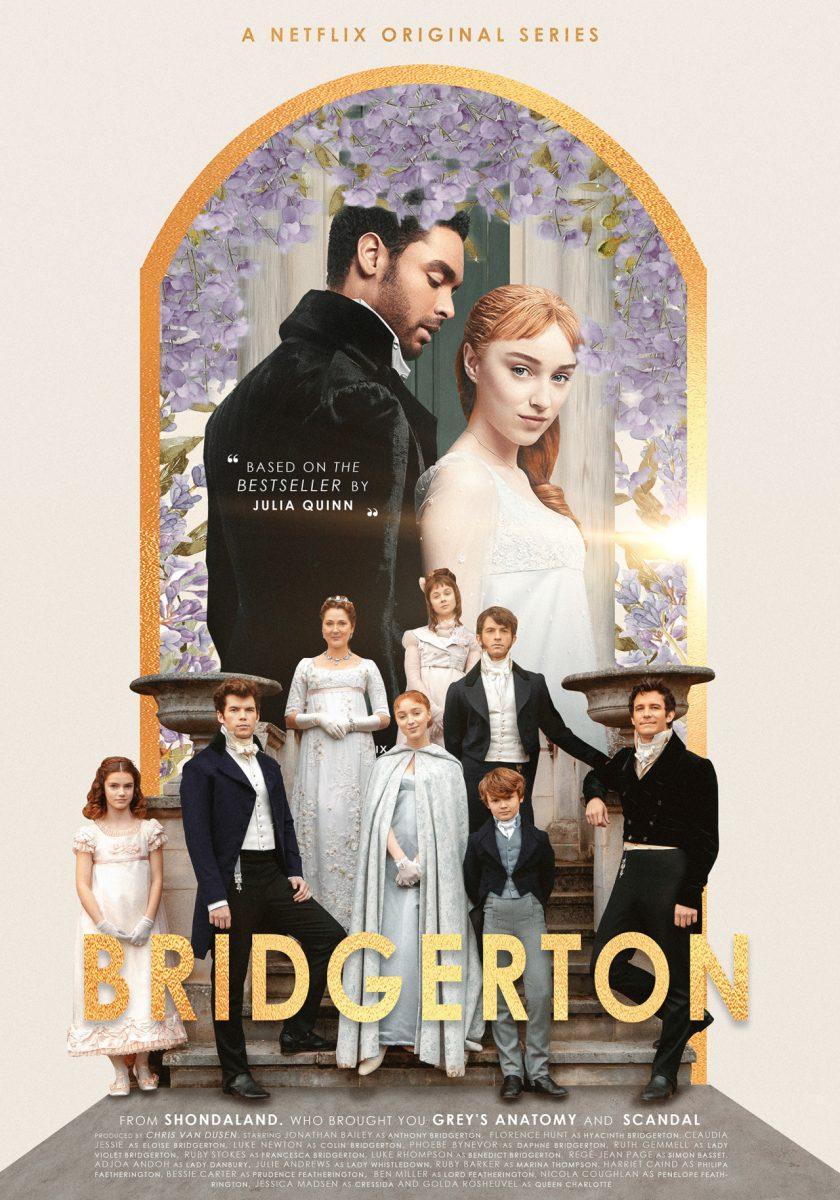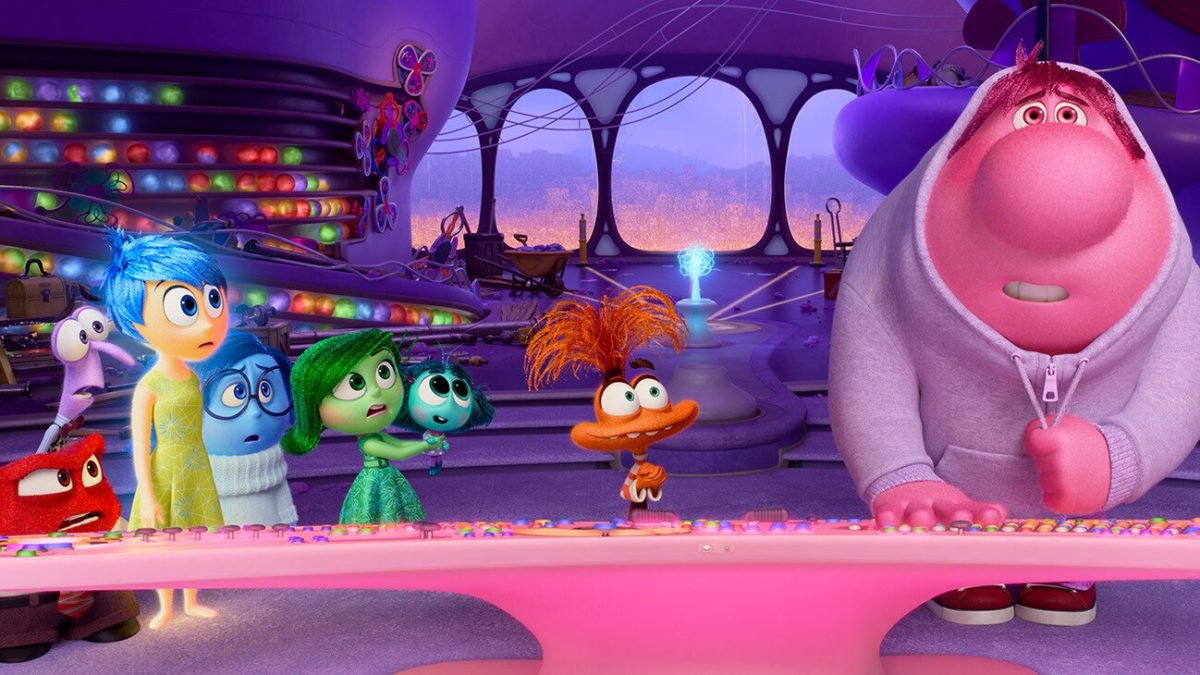Pretty faces, pretty dresses and gorgeous set pieces— is there anything more delightful than a period drama? “Downton Abbey,” “Outlander” and “Poldark” stand out as some of the most popular period dramas full of twists, turns and melodrama. Netflix’s own “Peaky Blinders” and “The Crown” have gained much critical acclaim and popularity as well, so it’s no surprise that their latest release,“Bridgerton,” would follow suit. Over the top in terms of set design and costumes as well as dramatic plot lines, “Bridgerton” combines what audiences have come to expect of a period drama and compiles it into a bingeable series for millennials and “zoomers” alike.
Following in the footsteps of Lady Mary in “Downton Abbey” and Queen Elizabeth in “The Crown,” “Bridgerton” centers around Lady Daphne Bridgerton, our strong and bold heroine whose struggles are often a result of the opinions of those around her and the time period in which she is confined. As part of the social elite in late Georgian Era London, social season is the time when young men and women are expected to find a spouse through various balls and events. This season is particularly important for Daphne, as it happens to be her first, and these impressionable moments are vital to her success in finding a suitor.
Voiced by Julie Andrews, Lady Whistledown serves as the narrator, an unseen but prominent woman in the social elite whose published writings summarize the significant and sometimes scandalous events of the season. A simple word from the mysterious Lady Whistledown could help or hurt the characters’ reputation. While Phoebe Dynevor’s character Daphne initially gets a stellar mention from Lady Whistledown, things get complicated for her when her overprotective and overbearing brother manages to drive off all eligible suitors at the start of the season.
However, when she runs into the reserved and haughty Duke of Hastings, Simon Basse, played by Regé-Jean Page, she and the Duke devise a scheme. As a woman who wishes to marry above and elevate her social standing, and a man who is not interested in marrying anyone, the pair resolve to make it appear as though they intend to marry each other. In simple terms, they begin a fake dating experience in an effort to make others jealous. As a plot point that sounds eerily similar to 2018’s “To All the Boys I’ve Loved Before,” it is not difficult to guess how their pact turns into a friendship, and eventually something more.
To say period dramas lack diversity would be an understatement, which “Bridgerton” attempts to remedy this by casting biracial actors. Interestingly, even if historically innacurate considering the time period, it’s clear that the focus of the show was Daphne’s journey as a woman trying to find love on her own terms and taking steps to control her own life. The show works very well in this way and is empowering in a setting that would not usually allow for it. Instrumental covers of pop songs also help to cement that this is a period drama meant to appeal to our generation.
Something else that also makes “Bridgerton” worth watching is the compelling side characters and their plights. There’s the tragic story of Miss Marina Thompson who must look for a suitor while the love of her life is a soldier on duty, the misadventures of the Featherington family and the chronicle of Daphne’s brother Anthony who loves a singer below his social class. But the most engaging of them all was the journey of Eloise Bridgerton who does not want to follow in the footsteps of Daphne in becoming a wife and mother, but instead seeks to start her own life in hopes to uncover who Lady Whistledown is. There are many more subplots that each get just enough screen time to not feel rushed, but could all have been fleshed out in their own right.
While the show is not as family friendly as other popular period dramas, it is certainly full of grandeur— in every sense of the word. Daphne and Simon’s story does drag at times, but overall, “Bridgerton” is a quick and worthwhile watch.































